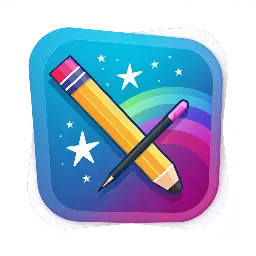Step into De Wereldreiziger in Antwerp, Belgium, and you'll hear seventy languages spoken by children from around the globe. This vibrant diversity presents both challenges and unique opportunities for educators. Thanks to AI-powered technology, language is no longer a barrier to learning but a doorway to greater inclusion and success.
Diversity as a Strength
At De Wereldreiziger, principal Jef Groffen and his team view diversity as a powerful asset. Many students come from refugee backgrounds or homes where Dutch, the language of instruction, isn't spoken. Traditional methods simply can't bridge such a wide linguistic gap. Teachers like Charlie Todts turn to Microsoft's AI tools, finding that technology makes personalized learning possible in busy, multilingual classrooms.
AI as the Ultimate Assistant
Every student from the third grade receives a Surface laptop, and educators use Microsoft Teams and SharePoint to manage lessons. These platforms enable teachers to monitor student progress, tailor assignments, and offer feedback that speaks to each child's needs. Groffen compares Teams to having "25 assistants"—one for each student—making individualized instruction a reality.
Transforming Reading Through AI
Mastering Dutch is essential for students to thrive across the curriculum. AI-driven apps like Microsoft Reading Progress and Immersive Reader are revolutionizing this process. Reading Progress captures students as they read aloud, analyzes their pronunciation and fluency, and provides instant feedback for improvement. Immersive Reader goes even further, translating texts on demand, supplying visual aids, and supporting learners with dyslexia. These tools ensure that every child, regardless of language background or learning difference, can tackle challenging material alongside their peers.
Accelerated Achievement and Recognition
The results are impressive: students are making months of progress in just a few weeks. This remarkable growth earned De Wereldreiziger the Special Belgian Award for AI in Education, highlighting the school's impact. Despite the fact that over 70% of students don't speak Dutch at home and nearly 60% come from families where mothers lack a high school diploma, AI is narrowing achievement gaps that have long persisted in traditional classrooms.
Expanding Success Across the Region
Microsoft's vision extends beyond one school. According to education advisor Kris Vande Moortel, hundreds of teachers and thousands of students across Flanders now benefit from these AI-powered reading tools. Plans are underway to scale these solutions further, reinforcing Microsoft's mission to make equitable education accessible to all.
Teachers and Technology: Partners in Progress
Classroom leaders like Dieter Eyzermans find that AI lightens their workload and deepens their connection with students. With real-time monitoring and personalized feedback, teachers can focus on what matters most: nurturing individual growth. Eyzermans urges colleagues to embrace technology as a powerful ally—one that supports, rather than replaces, the essential human role of the teacher.
Creating Global Citizens
For families such as the Todts, the school's inclusive environment is life-changing. Their children build friendships and gain cultural awareness that stretches far beyond the classroom. As Charlie Todts puts it, "the world is in our school"—and with AI, every student is empowered to find their place in it.
Key Takeaway
The experience at De Wereldreiziger demonstrates that the combination of innovative technology and an inclusive mindset can overcome educational barriers rooted in language and background. AI doesn't diminish the teacher's role—it enhances it, ensuring that every child can thrive in a truly global classroom.
Source: Microsoft Source EMEA

How AI Breaks Language Barriers in a Belgian Multilingual School